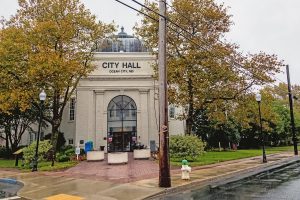
OCEAN CITY – Resort planners last week got a better understanding of tourism data as they look to update Ocean City’s comprehensive plan.
Last Wednesday, the Ocean City Planning and Zoning Commission invited Tourism and Business Development Director Tom Perlozzo to participate in a work session for the comprehensive plan update. City Planner Bill Neville said Perlozzo’s knowledge of tourism data would assist commission members as they begin to update the planning document.
“It’s the fun facts about Ocean City that are imbedded in our comprehensive plan and pulled out to help the community,” he explained. “That’s really how we’re getting started today.”
In December, the commission began an update of the town’s comprehensive plan, which guides land uses – such as housing, commercial, recreation and public facilities – within the community. The most recent update, Neville said, was completed in 2017 and adopted in 2018.
As part of that effort, several guests will be invited to work sessions of the planning commission to offer their insights as it pertains to specific chapters of the comprehensive plan. Neville told commissioners last week the first two sections of the planning document address community character, economic development and Census demographics.
“What we’ve relied on in the past is going to our tourism director for a lot of that information,” he said.
Neville said the goal of the meeting was to have Perlozzo review tourism data and consider any changes to the comprehensive plan.
“What I think is interesting is finding out what information the tourism department collects,” he said. “Is it identifying a trend we should weave into the comp plan this year?”
For his part, Perlozzo said prior to his hiring in 2021, the tourism department collected visitation numbers using demoflush, at metric system that uses wastewater output to determine population. He noted, however, that those statistics didn’t necessarily reflect the number of visitors in town.
“I don’t know how that was collected,” he said, “but I didn’t think that was too reliable for what we needed to do.”
Since that time, the tourism department has utilized several software platforms – including Zartico, Placer.ai and AirDNA – to track visitation and foot traffic and collect consumer data. He said those tools have been helpful in developing a new brand and advertising campaign for Ocean City.
“Sometime about six months after that we made a concerted effort to get some intelligence to allow us to look at market trends, look at visitor origins and help us better market the resort and create an opportunity to make it a year-round destination,” he said.
Neville noted the planning commission expressed interest in developing a survey that would assist the town in updating its comprehensive plan. He questioned if the tourism department also used surveys.
“It’s one of those things we’re thinking about for the land use side of things,” he explained. “Is there still value to completing a user survey of basically town residents or visitors?”
Perlozzo said the tourism department utilized focus groups and surveys as part of its rebranding effort. He said the town collected 5,000 responses.
“That’s really the only survey-type stuff we’ve done in the last two years,” he replied.
Neville also questioned if the state produced tourism data that tracked tax revenue, visitation and employment. Perlozzo noted an annual report was provided online.
“The number that’s really interesting is how much money tourism is saving each individual income tax holder in Maryland based upon tourism efforts they put together,” he said.
Neville said a significant challenge the town faced was using Census data, which measured the permanent population on April 1. He said that didn’t accurately reflect Ocean City’s population.
“As I was going through this, when we pull that information out of the Census data, and plug it into our Chapter 1, I have this sense it’s not capturing what’s unique about Ocean City,” he said. “It’s not necessarily providing us with information that then leads to the recommendations we put into the plan.”
Officials also highlighted issues with using demoflush to track visitation. Perlozzo said he felt confident the tourism department’s new tracking software better reflects population trends.
“We’d like to build a new measuring tool …,” Neville told Perlozzo. “What is a real value is not any one given year but year-over-year comparisons. So as you start to collect this data over the next few years, it will be really helpful.”
Neville encouraged commission members to consider Census and tourism data as they suggest changes to the comprehensive plan. While he acknowledged tourism as the town’s primary industry, he said topics such as aging and housing were also important.
“Think about things as we move forward in these 10-year increments,” he said. “What do we think best represents where we think Ocean City is? I think it’s interesting to start with tourism, and we recognize that as the primary industry of our community. But we can’t, when we get to the housing chapter, ignore the fact that we have a secondary primary industry, which is the support for the businesses that provide the entertainment.”

